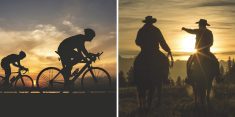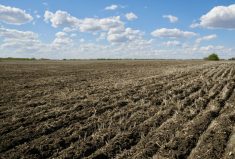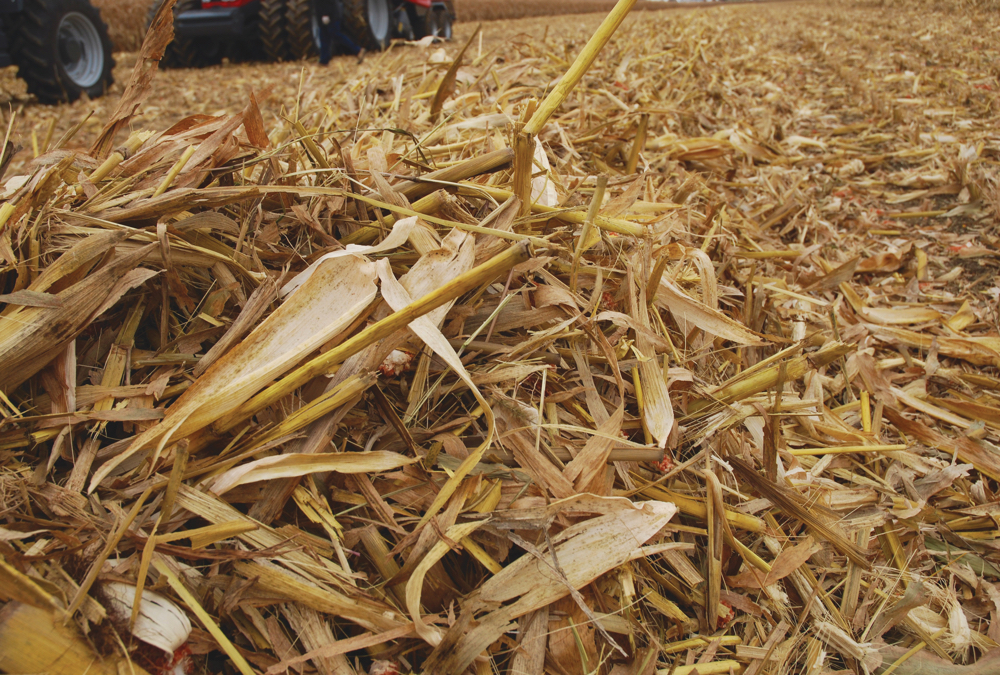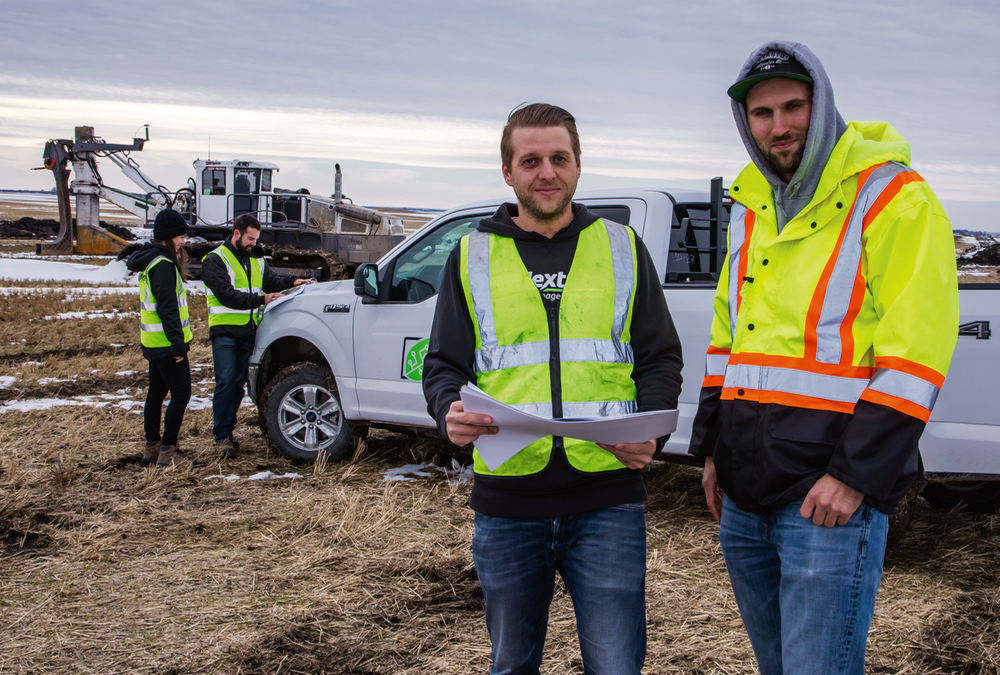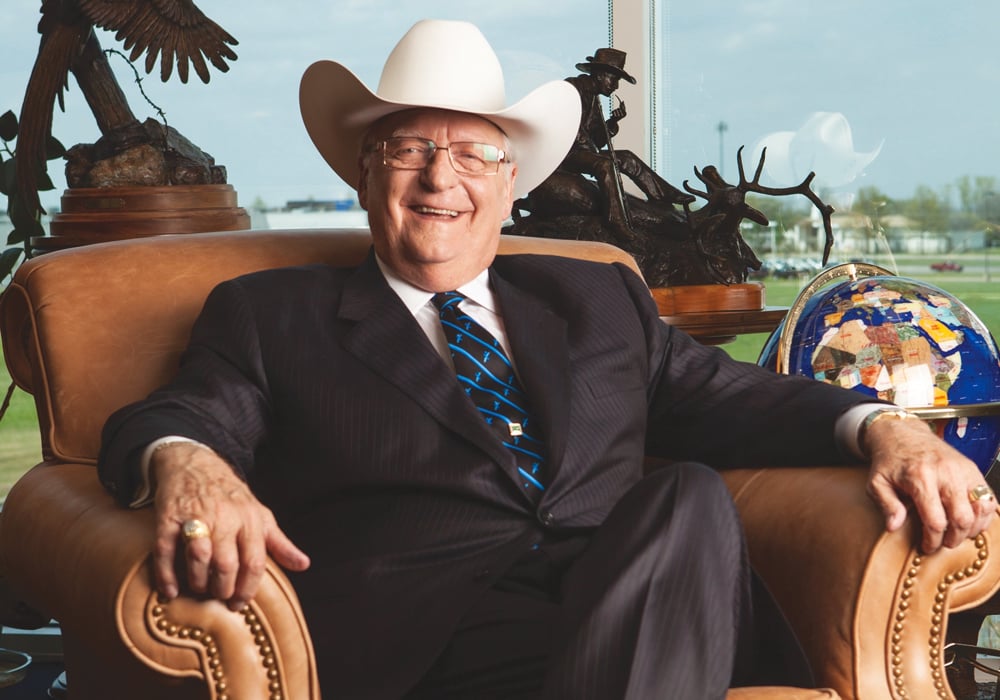About 10 years ago, Ryan Boyd came to his father Jim with some new ideas, and Jim knew it was time to listen. Ryan talked about a new strategy, adopting regenerative and sustainable approaches in order to enhance their productivity.
“Dad was more than willing to try something else,” Ryan says. “He’d always believed the best way to improve the business was by acquiring more acres, spreading out the overheads, and just working harder. But now he was beginning to get burned out.”
As he says this, Ryan pauses for a moment, then continues, “He was ready for some new energy and some new ideas. I’ve been extremely fortunate. Both my parents have been supportive, and open to change and trying new things.”
Ryan, wife Sarah, and two-year-old daughter Piper are the third and fourth generation on SG & R Farms Inc. just north of Brandon near Forrest, Man., with around 2,000 acres of annual crops and 1,400 acres of perennial pasture where they calve 300 cows.

Since that conversation with his father, Ryan’s focus has been to better integrate the cattle and annual crops into a single intensively managed system. Here’s how it’s turning out.
Finding the low risk option
With a BSc. in agriculture from the University of Manitoba to fall back on, Ryan had come back to the farm in 2006 to put into practice some of the innovative theories he’d learned at school about cropping and extended grazing systems.
“It was an economic incentive to start with because, when I came back, it was your typical farm that had a reasonable amount of assets but wasn’t generating that much cash flow,” Ryan says. “I didn’t want to continue to expand acres, because that requires more machinery and creates a cycle that feeds on itself. I was a beginning farmer with no equity and the first year wasn’t very prosperous, so that really shaped my views on how much risk I wanted to take. The cattle seemed a low-risk option. We could increase our productivity by leveraging our management with the cattle and the grazing side of things.”
Read Also

Youth focused on keeping Quebec’s dairy industry strong
In part two of our Making the Future series, Country Guide spoke with Béatrice Neveu from Rawdon, Que. (Read part…
Ryan spent a lot of time attending Grazing Club meetings and field tours, and got some invaluable advice from other holistic managers and intensive grazing gurus such as Gabe Brown in North Dakota and Neil Dennis from Wawota, Sask.
“I started thinking about the soil health side of things because we needed to build organic matter and increase water infiltration on our farm, but I started to see how the soil biology plays a critical part in all that too,” says Ryan.
The mentoring he got from people like Dennis, a recognized pioneer in planned grazing and using high stock density to regenerate land, was invaluable, adds Ryan.
“I spent a couple of days with Neil Dennis when we just were setting things up and trying to figure out how to design our paddocks and the grazing system. That had a huge impact on what we do. I took the Holistic Management and Ranching for Profit courses as well in 2006, and that opened my eyes up in a big way to the economic benefits of making everything work together.”
Ryan began by moving calving to June and establishing a simple rotational grazing system, moving the cows every two weeks through three or four paddocks.

In 2006, Ryan also under-seeded about 1,000 acres of grain crops to forages for grazing the following summer. He began to use a combination of the annual forages and perennial pastures for intensive grazing, using higher stock densities, and grazing for shorter periods, then moving the cattle daily to allow long periods of rest and regrowth.
Recently he has extended grazing into fall and winter by grazing corn, and he has integrated a 15-species, annual polycrop to provide green feed and extended grazing. The cumulative impact of these systems has improved soil quality, increased productivity on the same acres, and led to better cattle health.
Learning the ropes early
The Boyds were preparing for transition long before Ryan came back to the farm. He rented his first 50 acres from his grandfather when he was 16. “As a kid I was already making decisions on buying crop inputs and selling the grain,” he says. “Then I bought land from Dad when I was 18, so that started a more formal transition plan. It was a joint effort to start, and as time went on I have gradually taken on more responsibility until now I make most of the decisions day to day.”
They are still working on how to finalize the transition and make the necessary corporate transfers, but parents Jim and Joanne finally get some extended vacation time during the winter months, while Ryan continues to tweak a system he believes will ensure the continued viability of the farm.

“I have a fresh set of eyes and maybe more of a vested interest in the sustainability of the farm at the beginning of my career than somebody who’s at the end would have,” says Ryan.
“We wouldn’t be doing what we’re doing if I didn’t think it was making my farm more sustainable,” Ryan says. “I don’t need to hit home runs; I’d rather hit base hits every year than hit it out of the park this year and then go the other way just as far in the hole the next year.
“We have definitely taken the sharp edges off the weather extremes by doing what we’re doing, and by being a mixed farm. We have the scale now where we have enough cows to offset the grain side, whereas we didn’t used to as far as revenue streams go. The diversity in enterprises has made us much more resilient to the market.”
Down the road, the Boyds intend to continue to improve productivity and increase profit margins, but Ryan says he’s not hitching his wagon to increasing acres. “I thought land was overpriced 10 years ago, so I figured we needed to come up with some sort of system that didn’t rely on more acres every year,” he says. “If farmland becomes available close to home, I’m going to be taking a look at it because we do rent land that’s not close to home, but we have lots of opportunity to make a good living on the acres we already have just by continuing to improve our management.”
But there are other reasons why the Boyds chose the farming life that have nothing to do with dollars and cents, and why Ryan doesn’t see the point in getting too competitive over land.
“A big reason that we are farming is community, and I don’t want to base my success on taking over the neighbours’ land,” he says. “I would be much happier if every neighbour’s kid was farming, because then I would have more farming neighbours and friends going forward.”




